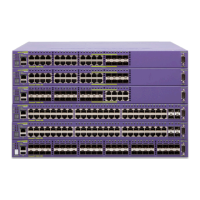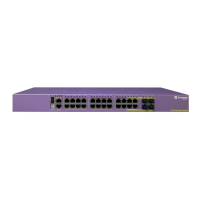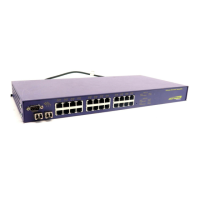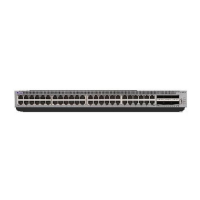66 Summit 200 Series Switch Installation and User Guide
Managing the Switch
Using Network Login
Network login is a feature designed to control the admission of user packets into a network by giving
addresses only to users that have been properly authenticated. Network login is controlled by an
administrator on a per port, per VLAN basis and uses an integration of DHCP, user authentication over
the web interface, and, sometimes, a RADIUS server to provide a user database or specific configuration
details.
When network login is enabled on a port in a VLAN, that port will not forward any packets until
authentication takes place.
NOTE
Windows authentication is not supported via network login.
Network login has two modes of operation:
•Campus mode—Campus mode is used when a port in a VLAN will move to another VLAN when
authentication has been completed successfully. This mode is for the roaming user who will not
always be using the same port for authentication.
• ISP mode—ISP mode is used when the port and VLAN used will remain constant. All network
settings are configured for that VLAN.
These two network login modes have the following functional similarities:
• Until authentication takes place, ports on the VLAN are kept in a non-forwarding state.
• Each mode requires the user to open a web browser with the IP address of the switch. This is the
only address that the client can reach in a non-authenticated state.
• The web server on the switch provides user authentication.
• After authentication takes place, ports are moved into a forwarding state and moved to the VLAN
configuration on the RADIUS server.
enable tacacs-accounting Enables TACACS+ accounting. If
accounting is use, the TACACS+ client
must also be enabled.
enable tacacs-authorization Enables CLI command authorization.
When enabled, each command is
transmitted to the remote TACACS+
server for authorization before the
command is executed.
show tacacs Displays the current TACACS+
configuration and statistics.
show tacacs-accounting Displays the current TACACS+ accounting
client configuration and statistics.
unconfig tacacs {server [primary | secondary]} Unconfigures the TACACS+ client
configuration.
unconfig tacacs-accounting {server [primary |
secondary]}
Unconfigures the TACACS+ accounting
client configuration.
Table 20: TACACS+ Commands (continued)
Command Description
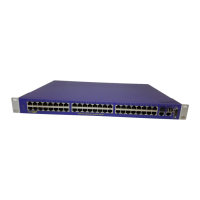
